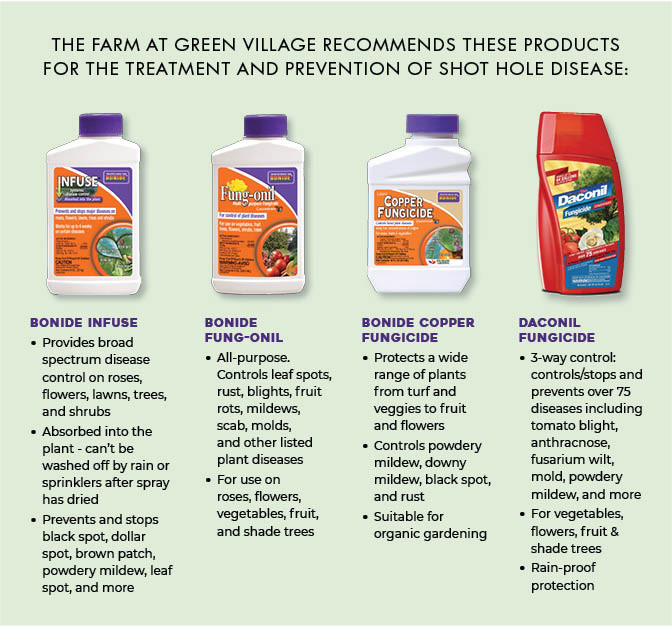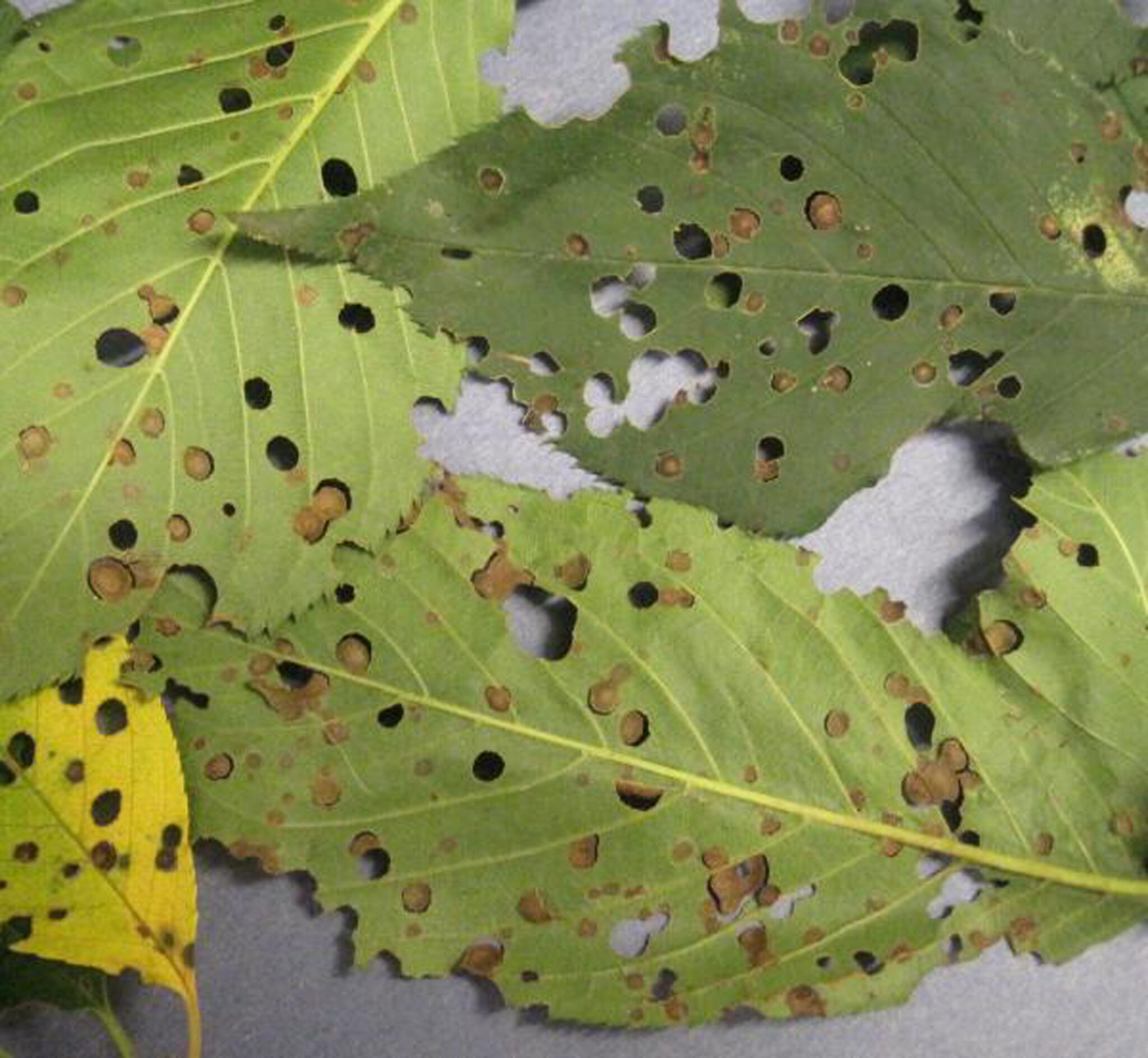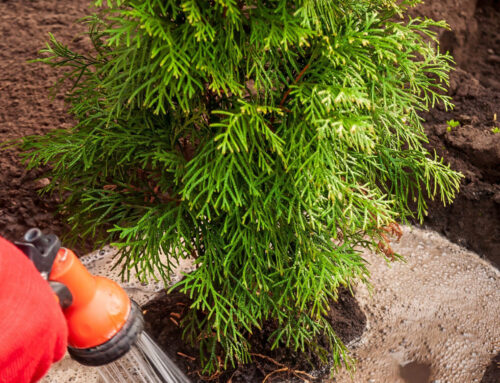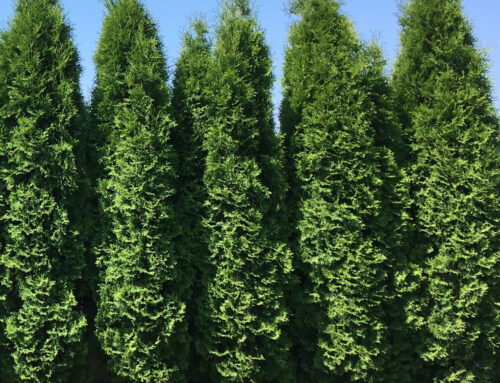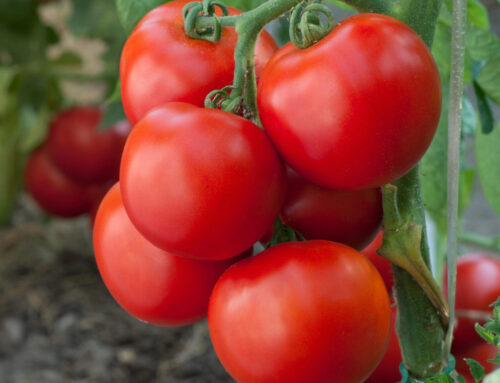Shot hole disease, or coryneum blight, is caused by the fungus Wilsonomyces carpophilus. It is most commonly found on Prunus spp. hosts including almonds, Catalina and Japanese flowering cherries, English laurel, ornamental plums, nectarines, peaches, and especially apricot trees.
SYMPTOMS AND IDENTIFICATION
- Affects fruits, buds, and stems, but is most obvious on the leaves.
- First appear as small red spots on leaves which enlarge and become purple with a white center.
- Spots then drop out of the leaf to leave a BB-sized “shothole.”
- Numerous holes result from severe infections, making leaves look tattered.
- Fruit infections appear as purple-red spots on the skin which produce scab-like spots on fruit skin and cause the skin to crack and ooze.
- Infections on fruit nearing harvest produce sunken greyish lesions.
LIFE CYCLE
- Infections can occur via fungal spores from spring to fall.
- Rainy weather spreads spores from infected tissue to leaves and fruit by splashed water and wind-blown rain.
TREATMENT AND PREVENTION
Prevent foliage from getting wet by using:
- Drip irrigation
- Low-volume sprinklers
- Sprinkler deflectors
- Pruning off lower branches
Prune and dispose of diseased plant tissue as soon as it appears.
Apply fixed copper fungicides or certain synthetic fungicides such as chlorothalonil. It may be necessary to repeat treatment in late winter before buds swell or between full bloom/petal fall on highly susceptible apricots, or if the spring sees extended wet weather conditions.

Images of shot hole disease on Schip laurel
